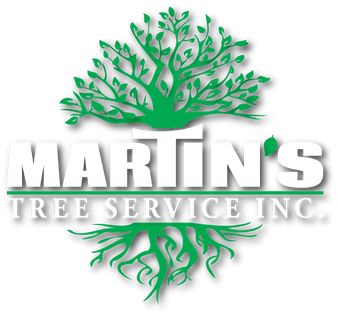
Have you ever walked down a street in your neighbourhood and noticed how different it feels when it’s lined with large, leafy plants? They provide shade on a hot day and add a splash of green to the concrete and brick of our cities. These plants play a huge role in making our urban spaces better places to live. But what exactly is that role, and what are the good and bad parts of having them in our cities?
Understanding the many urban tree benefits is the first step. From cleaning the air to making us feel happier, the plants in our cities do a lot for us.
However, there are also some challenges of urban forestry that we need to think about. Things like limited space for roots to grow and finding the right species for a city setting can be tricky.
This is where ideas around sustainable urban landscaping come in, helping us plan for a greener future that works for everyone.
Let’s explore the important part these green giants play in our urban world.
The Many Benefits of Our City’s Greenery
When you think about the plants in your city, you might just see them as decoration. But they do so much more. Their presence provides a long list of benefits that improve our daily lives, our environment, and even our wallets.
A Breath of Fresh Air
City air isn’t always the cleanest. Cars, buses, and factories can release pollutants into the atmosphere. The good news is that the plants around us act like natural air purifiers. Their leaves are amazing at trapping dust and harmful particles from the air.
Through a process you might remember from school called photosynthesis, they also absorb carbon dioxide and release the oxygen we need to breathe. Having more of them in our neighbourhoods means cleaner, healthier air for you and your family.
Keeping Cool in the Summer
On a scorching summer day, there’s nothing better than finding a shady spot. Plants provide natural air conditioning for our cities. Their leaves block the sun’s rays, cooling the air and the ground below. Areas with good canopy cover can be several degrees cooler than areas without. This helps in a few ways:
- Energy Savings: When your home is shaded, you don’t need to run your air conditioner as much. This can lead to lower electricity bills during the summer months.
- Comfort: Shaded streets and parks are more pleasant to walk through, encouraging people to get outside and be active.
- Reduced Heat Island Effect: Cities are often hotter than surrounding rural areas because buildings and pavement absorb and hold heat. Large plants help fight this by providing shade and releasing water vapour, which cools the air.
Managing Rainwater
When it rains heavily, all that water needs to go somewhere. In a city with lots of pavement and concrete, rainwater can quickly overwhelm sewer systems, leading to flooding. Plants are a huge help in managing this stormwater. Their leaves and branches catch a lot of rainfall before it even hits the ground.
The water that does reach the ground is absorbed by the soil around their roots, which helps prevent runoff. This natural system reduces the strain on our city’s drainage infrastructure and helps keep our waterways cleaner.
- Filtering Water: As water moves through soil and roots, many pollutants and harmful substances get filtered out, leading to cleaner water entering our rivers, streams, and lakes.
- Reducing Soil Erosion: The roots hold soil in place, which keeps it from washing away during big storms. This helps keep our parks and yards looking good and protects our city from losing valuable topsoil.
- Recharging Groundwater: When water slows down and soaks into the soil, it helps refill the natural underground water supplies that we all depend on.
These benefits show how important plants are for keeping our communities safe and healthy when it comes to managing rainfall.
Good for Your Well-being
Living around green spaces has been shown to have a positive impact on our mental and physical health. Spending time in nature can lower stress levels, improve your mood, and help you feel more relaxed. A walk in a park or down a nicely planted street can be a great way to clear your head.
- Promoting Physical Activity: Green areas encourage you to get outside, walk, bike, or play, which is great for your health.
- Reducing Urban Noise: Leaves and branches act as natural sound barriers, making neighbourhoods quieter and more peaceful.
- Fostering Community: Parks and public gardens become places where neighbours meet, kids play, and people connect, creating opportunities for friendships and bringing communities closer together.
They make our communities stronger and more enjoyable places to live.
Boosting Property Value
A well-maintained yard with healthy, mature plants can increase the value of your home. Potential buyers are often attracted to properties with beautiful landscaping. The aesthetic appeal of a green, leafy neighbourhood makes it a more desirable place to live. This is one of the many urban tree benefits that directly impacts you as a homeowner.
- Attracting Buyers: Homes with established greenery stand out, making your property more appealing to people looking to buy.
- Increasing Neighbourhood Appeal: Streets lined with leafy plants feel safer, more welcoming, and encourage pride in your community.
- Reducing Energy Costs: Shade from plants can lower home cooling bills in the summer, which is a bonus for any homeowner or potential buyer.

The Challenges of Growing in the City
While the benefits are clear, helping plants thrive in an urban environment isn’t always easy. City life presents a unique set of obstacles that we need to manage. Understanding these challenges of urban forestry is key to creating successful green spaces.
Limited Space to Grow
One of the biggest problems is space. In a busy city, every square metre counts. Plants need room for their roots to spread out and find water and nutrients. Unfortunately, they are often planted in small cutouts in the sidewalk or tight spaces between buildings. This can stunt their growth and make them less healthy.
Underground, the situation can be even more complicated. A web of pipes, cables, and foundations leaves little room for roots. When roots can’t grow downwards, they often grow outwards, which can lead to cracked sidewalks and damaged pavement.
Tough Living Conditions
The urban environment can be harsh. Plants have to deal with things they wouldn’t normally face in a forest.
- Pollution: Air pollution from traffic can coat leaves, making it harder for them to breathe. Salt used on roads in the winter can also get into the soil and damage roots.
- Soil Issues: The soil in cities is often compacted from construction and foot traffic. This makes it hard for roots to penetrate and for water to soak in. Urban soil can also lack the important nutrients that plants need to grow strong.
- Water Problems: City plants can experience both too much and too little water. Paved surfaces prevent rainwater from soaking into the ground, leading to drought-like conditions. At the same time, poor drainage can leave roots sitting in water, which can be just as harmful.
- Physical Damage: Plants in cities are at risk of being damaged by cars, construction equipment, and even vandalism.
The Right Plant for the Right Place
Choosing the correct species is crucial for sustainable urban landscaping. Not every type of plant can handle city life. Some are more tolerant of pollution, while others can handle dry conditions. Planting the wrong species can lead to problems down the road, like diseases, pests, or a plant that grows too big for its location. It takes careful planning to select plants that will not only survive but thrive in their specific spot in the city.
Upkeep and Care
City plants need regular care to stay healthy and safe. This includes pruning to remove dead or dangerous branches, checking for signs of disease or pests, and watering during dry spells. This maintenance requires resources and expertise.
Without proper care, plants can become a hazard, with falling branches posing a risk to people and property. This is one of the ongoing challenges of urban forestry that municipalities and property owners must manage.
Building a Greener Urban Future
So, how do we enjoy all the benefits while managing the challenges? The answer lies in smart planning and sustainable urban landscaping. This approach focuses on creating green spaces that are healthy, long-lasting, and work in harmony with the city environment.
It involves choosing the right species for each location, improving soil conditions, and designing spaces that give roots the room they need to grow. It also means committing to regular maintenance to keep our urban greenery healthy for generations to come.
As homeowners, you play a part in this. The choices you make for your own property contribute to the overall health of our urban environment. Planting the right species for your yard, providing proper care, and understanding the needs of your plants all help build a greener, healthier Waterloo Region.
Your Partner in Urban Greenery
Navigating the world of urban greenery can be complex, but you don’t have to do it alone. Whether you’re considering the many urban tree benefits for your property, facing some of the common challenges of urban forestry, or looking to implement sustainable urban landscaping practices, having expert help is invaluable. A healthy, beautiful, and safe landscape adds so much to your home and community.
If you have questions about the plants on your property or need professional care, our team at Martin’s Tree Service in Waterloo Region is here to help. Request an estimate today to learn more about how we can help you care for your piece of the urban forest.
Steve Martin

